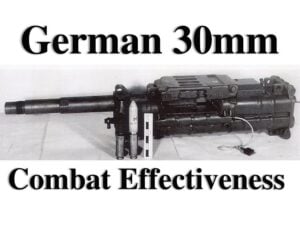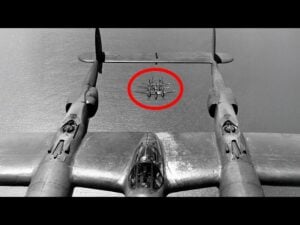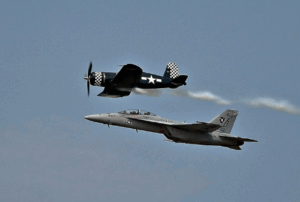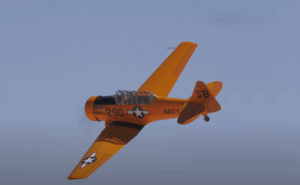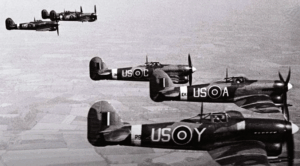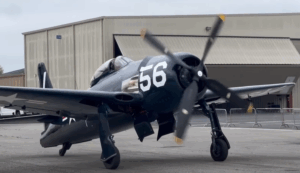6 Most Notorious Axis Bombers of WWII

Dark Skies / YouTube
During World War II, bombers were essential tools for both Axis and Allied forces. They carried out strategic bombing campaigns, targeted enemy supply lines, and provided support for ground operations. Among the Axis powers, several bombers gained notoriety for their effectiveness and the impact they had on the war. Here are six of the most infamous bombers used by the Axis during WWII.
1. Heinkel He 111 (Germany)

The Heinkel He 111 was one of the most widely used bombers in the German Luftwaffe. Originally designed as a civilian airliner, it was quickly converted into a bomber and saw extensive action throughout the war. The He 111 became a central part of German bombing campaigns, especially during the Battle of Britain, where it was used to target British cities and industrial areas.
Equipped with a crew of five to six and capable of carrying a significant bomb load, the He 111 could perform a variety of missions. Its versatility made it useful for both strategic bombing and as a transport aircraft. However, its defensive armament was relatively weak compared to later bombers, making it vulnerable to enemy fighters, especially as Allied air defenses improved. Despite these weaknesses, it remained in service for much of the war, serving on all major fronts, from North Africa to the Soviet Union.
2. Junkers Ju 88 (Germany)

The Junkers Ju 88 was a highly adaptable aircraft, designed as a medium bomber but also used as a reconnaissance plane, night fighter, and dive bomber. Its versatility allowed it to fill multiple roles within the German air force, making it one of the most important bombers in Germany’s arsenal. With a top speed of over 300 mph, it was faster than many of its contemporaries, giving it an edge in both bombing and evading enemy fighters.
The Ju 88 participated in almost every major campaign the German military was involved in, including the early blitzkrieg operations, the Battle of Britain, and the war in the Soviet Union. It could carry a substantial bomb load, which made it ideal for a range of missions, from attacking shipping convoys to striking key enemy installations. As the war dragged on, newer variants of the Ju 88 were introduced, equipped with better armament and radar systems, ensuring its continued effectiveness even as Allied air superiority increased.
3. Fiat BR.20 (Italy)

The Fiat BR.20 Cicogna was Italy’s first modern bomber, designed in the mid-1930s. It featured a sleek, twin-engine design and was used extensively by the Italian air force during the early years of WWII. The BR.20 participated in Italy’s campaigns in North Africa and Greece and was also deployed during the Battle of Britain in support of German operations.
Despite being a modern design for its time, the BR.20 suffered from various shortcomings. Its defensive armament was inadequate, and its bomb load was smaller than many of its counterparts. As a result, it struggled against more advanced Allied aircraft, leading to heavy losses. Nonetheless, the BR.20 played a significant role in the early stages of the war, particularly during Italy’s attempts to expand its influence in the Mediterranean and North Africa.
4. Mitsubishi G4M “Betty” (Japan)

The Mitsubishi G4M, codenamed “Betty” by the Allies, was the Imperial Japanese Navy’s main land-based bomber. Known for its long range and large bomb capacity, the G4M could carry out long-distance missions, making it ideal for targeting distant Allied bases and ships. It gained notoriety early in the war for its role in the sinking of the British battleships HMS Prince of Wales and HMS Repulse off the coast of Malaysia.
However, the G4M’s design prioritized speed and range over armor and self-sealing fuel tanks, making it highly vulnerable to enemy fire. It earned the nickname “Flying Lighter” due to its tendency to burst into flames when hit. Despite these weaknesses, the G4M was used throughout the war, and its crews carried out numerous long-range bombing and torpedo missions across the Pacific Theater.
5. Dornier Do 17 (Germany)

Nicknamed the “Flying Pencil” due to its slim fuselage, the Dornier Do 17 was one of the early bombers used by the German Luftwaffe. It was initially designed as a fast bomber, meant to outrun enemy fighters rather than fight them off with heavy defensive armament. The Do 17 first saw action in the Spanish Civil War and was later used extensively during the Battle of France and the Battle of Britain.
Although it was relatively fast and agile for a bomber, the Do 17’s limited range and bomb load reduced its effectiveness as the war progressed. By 1942, it was mostly replaced by more advanced aircraft like the Ju 88. However, the Do 17 played a significant role in the early campaigns, helping to establish German dominance in the air during the initial stages of the war.
6. Nakajima Ki-49 “Helen” (Japan)

The Nakajima Ki-49, known by the Allies as “Helen,” was a Japanese medium bomber developed to replace the aging Mitsubishi Ki-21. The Ki-49 was intended to have better defensive armament and increased survivability compared to earlier Japanese bombers. Its designers aimed to create an aircraft that could perform bombing raids without the need for heavy fighter escort, which was a common weakness of Japanese bombers early in the war.
While the Ki-49 did have more guns and better armor than its predecessors, it still lacked the performance needed to compete with newer Allied fighters. It saw extensive use in the China-Burma-India theater and in the defense of Japanese-held territories as the Allies pushed closer to the Japanese mainland. Despite its shortcomings, the Ki-49 remained in service until the end of the war, used primarily for secondary roles such as transport and reconnaissance.














